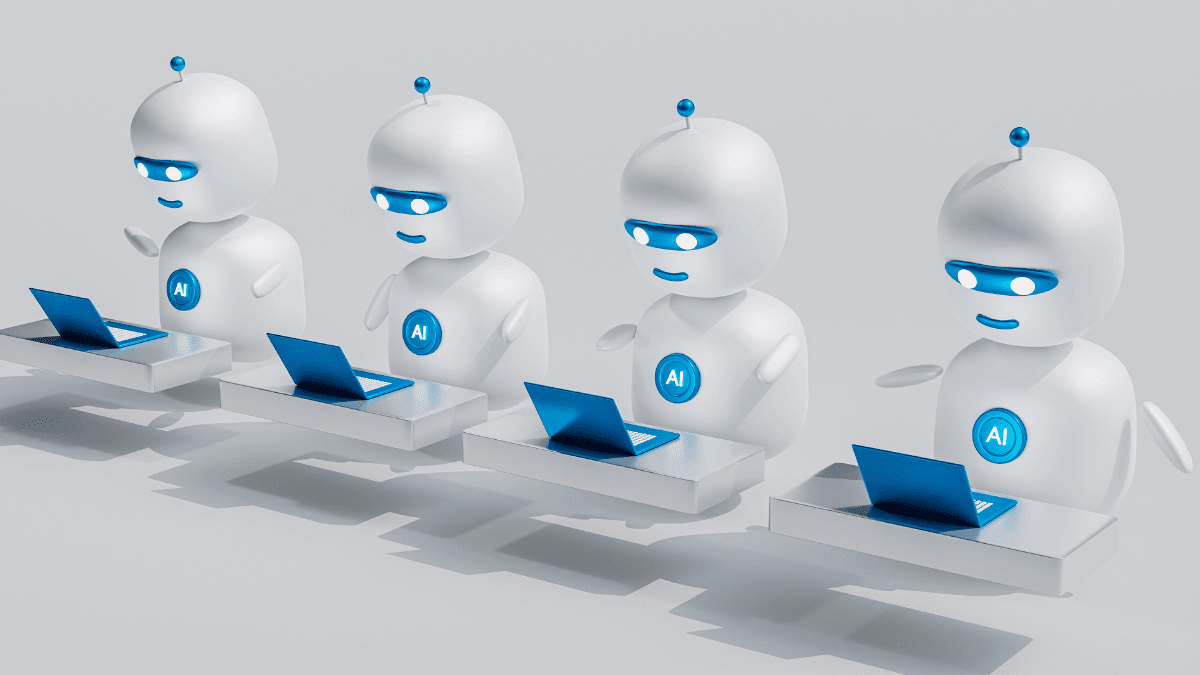How to Use AI for Your Own Business in 2024

AI is a powerful tool that can help small businesses achieve great things.
The Small Business and Entrepreneurship Council (SBEC) recently released a report that shows that a growing number of small businesses are utilising artificial intelligence (AI) tools to increase productivity and save hundreds of billions of dollars annually. However, many business owners are still attempting to understand exactly what AI means for them.
According to the SBEC poll, 29% of small businesses have been utilising AI tools for one to two years, and over half (48%) of them started using them in the last year. “Small business owners have embraced AI rapidly, and the range of tools and applications are helping to boost profitability, productivity, and competitiveness at a time when they need such support,” says Karen Kerrigan, CEO of SBEC. Indeed, 93% of owners of small businesses confirm that AI tools provide affordable solutions that increase profitability and produce savings.
AI resources for your small business’s toolbox
ChatGPT was the first artificial intelligence technology to become widely used. It processes enormous volumes of data and can quickly compose an article on any topic you ask it to, much like any AI technologies. (However, since it isn’t always perfect, it’s crucial to double-check its job.)
AI technologies are available for nearly all company needs, including financial management, human resources, marketing and sales, and plan creation, frequently for little or no cost. Try these few resources:
- Upmetrics—Tool for writing business plans with 400 templates to choose from
- ClickUp—Cloud-based project management tool
- Jasper—Content generator for articles, blogs, social media posts, and marketing copy
- Zoho’s Zia—Sales tool for lead generation, lead management, data collection, and writing sales copy
- ChatSpot by HubSpot—Free sales and marketing tool, even if you’re not a HubSpot user
- DALL-E 2—Creates realistic images from written descriptions for creative development
- Manatal—HR recruitment tool
- Motion—Calendar tool to track your time and build itineraries
- Lumen5—Video creation tool
- Otter.ai—Meeting assistant tool that records conversations, takes notes, transcribes interviews, and generates summaries
Utilizing AI can save small businesses time and money
According to the SBEC report, AI has significantly reduced the time and expenses for small firms, enabling them to reallocate resources to a variety of sectors, such as:
- 41% have used AI to redirect their own time and employee time to higher-value work
- 39% have invested in AI tools for innovative solutions for customer engagement and retention
- 37% have used cost savings from AI to invest in other new technologies
- 36% have kept prices stable for customers in this inflationary environment
- 34% have used cost savings to pursue growth opportunities for their business
- 25% have used cost savings to increase wages and benefits
- 25% have used cost savings to set aside capital for emergency/other purposes
- 20% have used cost savings to pay down debt more quickly
Issues with the workforce propelling the adoption of AI
Adopting AI tools is primarily motivated by the top problem small businesses are currently facing—a limited labour market—in addition to time and cost savings. More small businesses are struggling to hire and keep employees as a result of COVID. Due to the historically low unemployment rate and the widespread availability of remote work, many individuals are now able to accept positions throughout the nation, which reduces the pool of talent accessible to local manufacturers, restaurants, and retail establishments.
The ability of workers in small towns to work remotely and earn big-city earnings has also resulted in an unsustainable increase in worker pay for small enterprises. The SBEC survey states that 25% of small businesses cited increased labour expenses as the reason they turned to AI technologies, while 19% stated they did so to supplement the capabilities of their current workforce or due to a shortage of qualified candidates.
Apart from labour shortages, nearly one-third of the businesses questioned by SBEC said they were turning to AI in order to remain competitive with other businesses, particularly larger ones.
Downsides of AI for small businesses
While AI tools are here to stay, that doesn’t mean there are no downsides:
Lack of creativity: First of all, the information provided by AI writing tools is often wrong, and the writing style can be stilted and lack a human element (as a writer I’m compelled to say that!). That same lack of creativity is also a common problem with many AI tools.
Missing an emotional element: AI also lacks the emotional element that humans bring to the table. While too much emotion in the workplace may be detrimental, empathy and decision-making based on a lifetime of experiences do matter when managing people and working as a team.
Robotics are expensive: If you’re talking robotics, that is still an expensive proposition. Standard robots that can do one task have been around for a long time and may be affordable, but robots that can think and take on multiple and complex tasks are still very expensive.
Fear of Skynet: The fear of “Skynet”—the AI company that took over the world of humans in the iconic movie The Terminator—is real. Our government is working feverishly to legislate and regulate against a similar dystopian nightmare. More to come on that in a future article.
Consider using AI in your business
For now, you owe it to your business and your customers to explore these AI tools. In our economy, where time and money both matter, AI will help with both. And, for the record, no AI tools were used in writing this article!